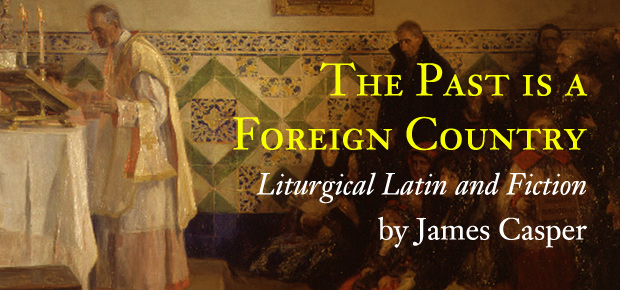
Much we know about the world would be lost were it not for artistic renderings of the past. Memories otherwise would seldom outlive those who remember.
Eamon Duffy’s The Stripping of the Altars forced professional historians and casual readers alike to revise assessments of the Catholic religion in England in the years immediately preceding the Reformation:
If medieval religion was decadent, unpopular, or exhausted, the success of the Reformation hardly requires explanation. If, on the contrary, it was vigorous, adaptable, widely understood, and popular, then we have much yet to discover about the processes and the pace of reform.
In the almost six hundred pages following this observation, Duffy develops support for this thesis: that the Reformation in England was more of a revolution against a popular, widely-revered institution than an effort to reform something rife with problems and corruption. He can only build his case by reference to contemporary written accounts and a study of Church artistic works that somehow managed to survive state-sponsored efforts to obliterate the past.
The Tudor and Puritan road he guides his readers down is littered with burnt books, defaced statues, destroyed altar screens, and melted down church vessels. Destroy the artistic creations and traditions of an age, and when the last person who remembers it dies, a world dies also. This is where the road ends.
In our own time, those of us old enough to remember the Catholic Church as it was prior to Vatican II are also living with an obliterated past on a road marked ‘Dead End’. Inevitably, as the days move along, we are a vanishing breed on an all but forgotten journey.
These days much is made of the Catholicity of celebrated writers Chesterton, Tolkien, and Waugh. The latter two lived long enough to experience firsthand changes wrought by Vatican II, and both railed against them. (Details are at hand in the Ignatius Press edition of A Bitter Trial.) Tolkien and Waugh would never again feel at home in the Church. G.K.’s childhood memory of successful businessmen, bankers, and shop clerks falling to their knees as Cardinal Manning passed by along Kensington High Street seems to come from a world other than this one. G.K.’s old nemesis, George Bernard Shaw, might think the Church has become a bit more palatable, but what would G.K. himself think? Given his sense of humor, he might have somehow managed whereas Belloc—had he lived to see the day—would have blown a fuse.
Tolkien is said to have been dismayed by the exiling of Latin to what would become in our time a liturgical antique shop. Pope Francis the other day spoke approvingly of the vernacular replacing it. Pope Francis knows more languages than I do, but Tolkien, who understood Old English well enough to translate Beowulf, was irate. At times I myself am not even sure what to make of the English version, let alone the German or the Polish, which I do not grasp at all. From the current Psalm translations, O Lord, deliver us!
Complaints in this vein are now seen as coming from the make-believe world of annoying and tiresome fuddy-duddies. It has not taken long to obliterate a world where liturgical Latin could flourish. And there is no going back, except in memory. Eamon Duffy understands this. The last sentence of The Stripping of the Altars sounds a mournful note.
Along the way he has argued that sixteenth century English Catholics—peasant farmer and local aristocrat alike—had a general grasp of the Latin used in liturgical celebrations of their day.
I would argue that much the same was true of the farmer, the butcher, the baker, and the candlestick-maker of my time. You did not have to be a Jesuit to know what was going on in an age when—by the way—not everyone at Sunday Mass trooped forward to receive communion. (Barely a majority did.) Share that fact with someone today, and mention fasting from midnight; the smell of tuna fish sandwiches for breakfast in your classroom after ‘First Friday’ Masses, etc.
With respect to the past, we are all ‘cafeteria Catholics’.
Tell someone you fondly remember Pope Pius XII from an age when pontiffs were not expected to smile like beauty queens. Attempt to explain why he is your favorite pope. Mention the Marian Year while you are at it. Describe his serious, ascetic demeanor. As likely as not, your listener will bring up the Nazis.
To adapt a line from the novelist L.P. Hartley, “The past is a foreign country: they do things differently there.”
What is a seventy-something writer supposed to make of this? Well, for one thing, he can set aside his laptop, pick up a quill pen, and do his bit to jot down a few remnants. Younger people will think that he made it all up, but how would they know when even their parents weren’t born yet?
Good stories have a staying power, a far longer half-life than much else that is written. Tolkien’s durable reputation reminds us of that. Chesterton’s The Man Who Was Thursday will outlive much else that he wrote. Our seventy-something writer might do it far less well than they did, but at least at the end he can say that he did his bit.
In one of my unpublished novels, a derelict hotel standing between a Catholic church and a strip club is demolished, leaving the church and strip club as next door neighbors in a sort of Augustinian microcosm of good and evil cohabiting. The pastor of the church and the manager of the strip club inevitably meet each other, and fall into the habit of visiting on a bench in the vacant lot where the hotel once stood. It turns out that the strip club manager is a former altar boy, old enough to remember the Latin responses to Mass prayers the priest also recalls from his seminary days.
Brought together by a shared past, soon enough the two of them are sitting on the bench in private, going through the Mass as it once was. We who still cherish such things read along to hear this luscious language batted back and forth between an old priest and a recalcitrant, once-upon-a-time altar boy:
Introibo ad altare Dei.
Ad Deum qui laetificat juventutum meam.
It is only a short walk from there to the church itself where a scandalized congregation stares agog as the strip club owner assists the priest at Mass. That such a past rings true in the hearts of these two old men was bound to lead somewhere wonderfully rejuvenating.
In the very best of fiction, this enlightening linkage between past, present, and future is always evident. Of course we see it in the writings of Tolkien and C.S. Lewis. We see it in the American South of William Faulkner; in the Ireland of James Joyce; in the shattered and sometimes shattering Catholic worlds of Evelyn Waugh and Graham Greene. We hear its echo, at once both hopeful and despairing in T.S. Eliot’s words from Ash Wednesday:
Because I know that time is always time
And place is always and only place
And what is actual is actual only for one time
And only for one place
I rejoice that things are as they are and
I renounce the blessed face
And renounce the voice
Because I cannot hope to turn again
Consequently I rejoice, having to construct something
Upon which to rejoice






Michelle
March 19, 2015 at 1:34 pm
I can’t be the only one who is now completely intrigued by your unpublished novel.
Stephanie A. Mann
March 19, 2015 at 1:38 pm
I like that scene from your unpublished novel! I attend Sunday Mass in the Extraordinary Form almost every week. By now, the Ordinary of the Mass in Latin is much more familiar to me than the English NO’s Ordinary. Our Godson’s big brother sings along to the Asperges–he knows it by heart. By heart!
Thank you.
Kate Casper
March 25, 2015 at 3:52 pm
Thank you for your encouraging remarks about my husband’s unpublished novel. An unedited first chapter of SOMEWHERE A CANDLE IS LIT will soon appear on his website.